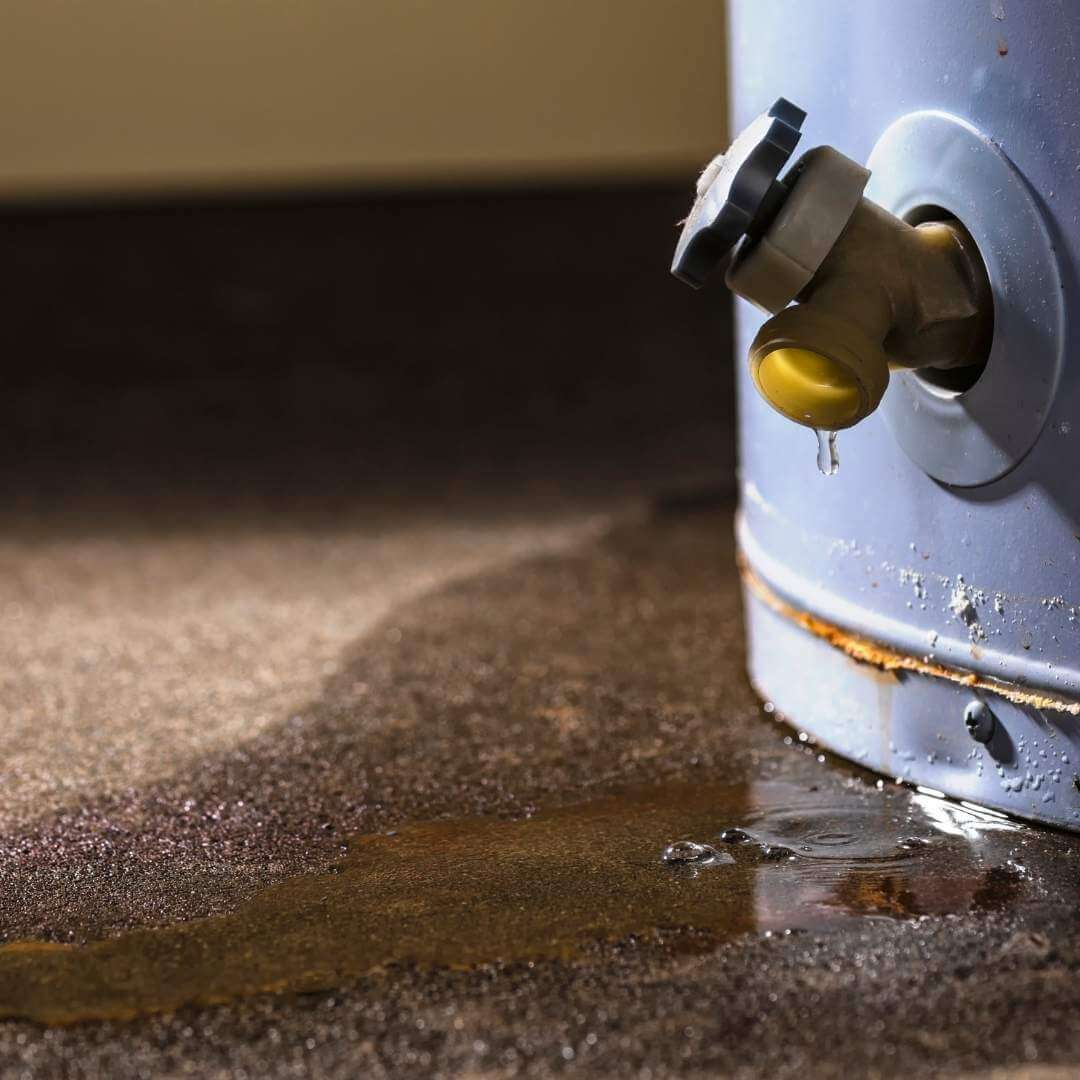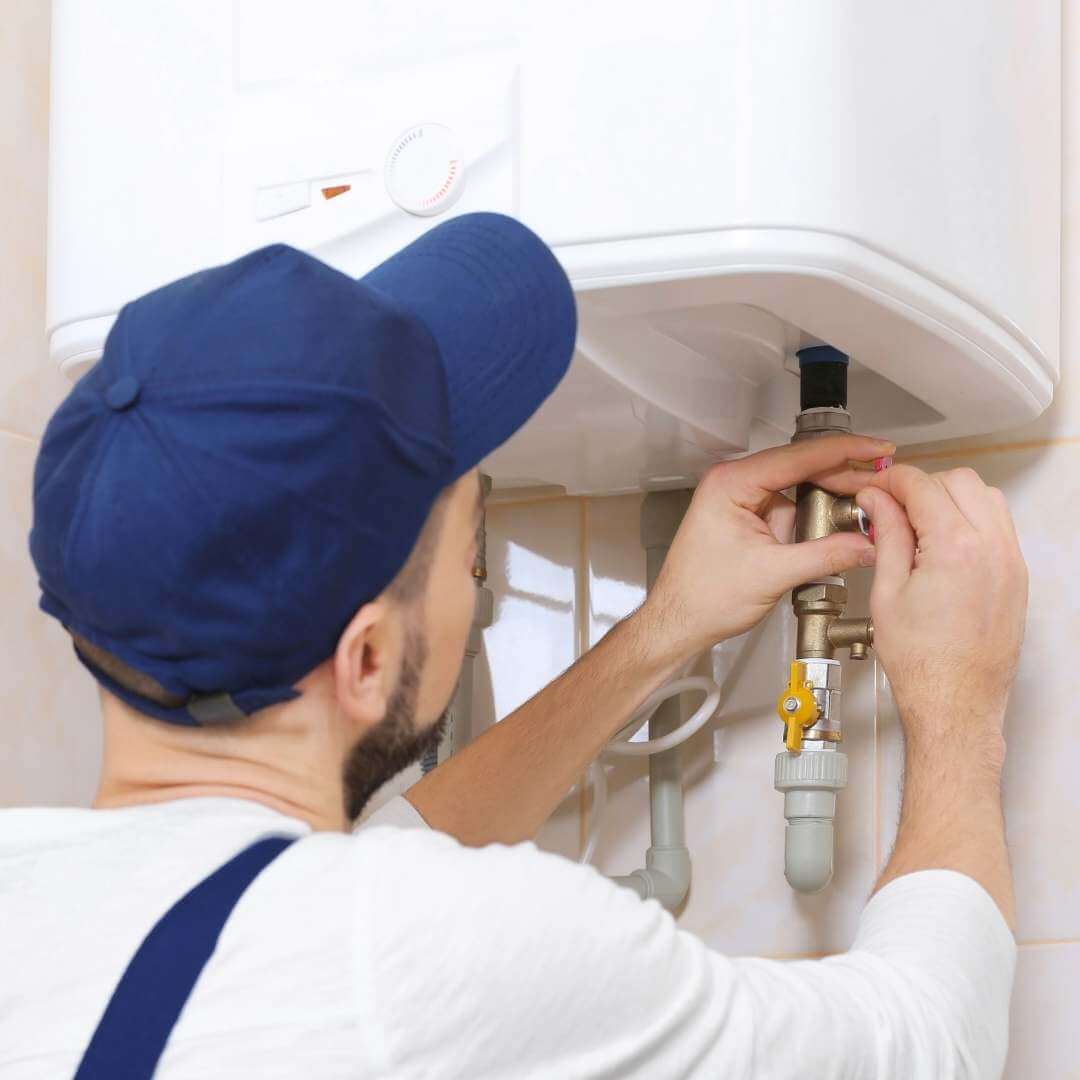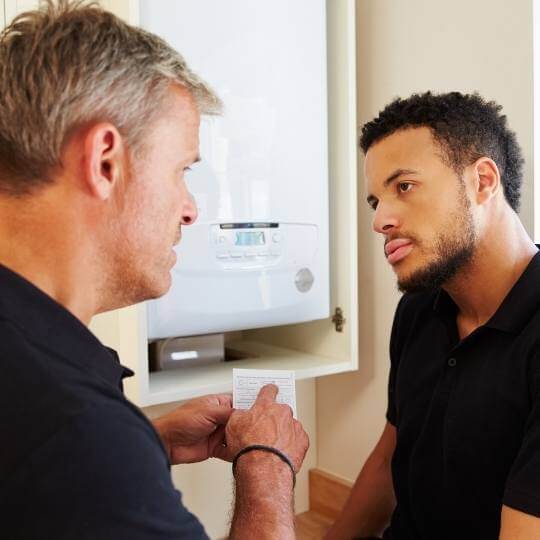One of the worst homeowners’ nightmare is finding the puddle of water on your bathroom floor. When you have a water heater leaking from bottom, this is just another mess you need to deal with – and a pretty expensive one, at that.
When you notice a leak beneath your water heater, it’s essential to know what caused it and what you can do to fix it. Otherwise, you’re risking more problems down the line. Not to mention how this can end up being quite costly!
Sure, you might end up having to call a professional. Still, you might be down for some TLC to see whether you can sort everything on your own and save some money.
There are several things that you can do to try to fix a water heater leaking from bottom. First, you need to learn what’s causing this issue.
Here’s everything you need to know.
Water Heater Leaking from Bottom

When you notice a puddle of water on the floor beneath your water heater, you might immediately think that the unit is what’s causing the issue. However, this isn’t always the case. Many types of leaks can cause such a puddle, and you need to make sure you have found the right spot of the leak.
For example, just because you’ve noticed the puddle doesn’t mean you have a water heater leaking from bottom. Most types of leaks, such as the leak at the relief valve, will end up on the floor either way. As such, make sure to thoroughly inspect the unit to make sure the leak isn’t coming from some other part of the water heater.
In fact, the culprit might not even be the water heater, but rather your HVAC unit or some other leak that’s causing water to drip or condensate on the heater itself. Always make sure to double check. Otherwise, you might end up spending bunch of money on something that isn’t even causing the issue.
What to Do if Water Heater Is Leaking from the Bottom?

If you’ve made sure the water is coming from the bottom of the heater, it’s time to discover what’s causing this issue.
Water heater leaking from bottom can be caused by many things, and not all are dangerous. This includes:
- Condensation
- Faulty temperature and/or pressure relief valve
- Broken or faulty drain valve
- Internal tank leak
Can a leaking water heater be fixed? This depends on what’s causing it and how severe the situation is.
Understanding the cause of the problem can help you find the solution. This is how you can fix things depending on the source:
Condensation
This is the best-case scenario, even though it is not really a leak. Instead, condensation is often mistaken for a leak, and the most common condensing location is the bottom of the tank.
So, what is condensation?
Condensation occurs when the airborne water vapor gets chilled enough to get below the temperature at which vapor becomes liquid. This is known as the dew point and it’s pretty common inside bathrooms, especially around the water heater.
The reason behind this is the difference in temperature between the incoming water temperature and the heating elements.
To be more precise, the incoming water temperature is rather low, while the water heater transfers heat to the surrounding elements. Once you turn the heater on, the hot flue gases will condensate when they touch cold surface.
It is estimated that an average water heater produces about half a gallon of water vapor per each operating hour. You can see how this can result in a rather large amount of condensation. This is why many homeowners confuse condensation with having a water heater leaking from bottom.
This is how you can determine whether you have a leak or condensation:
- Wipe up any water that has collected under the heater.
- Make sure the knob on the thermostat is turned to the pilot position.
- Once the heater is heated above 115 degrees, the condensation should stop.
- Wait for 8 hours, then check underneath the heater. If there is no more water, then you had an issue with condensation. However, if there is a puddle, then you truly have a leak.
If this is the reason behind your puddle of water, don’t worry. Condensation isn’t a true problem, unless it creates chaos on your floor. Even if this is precisely your concern, you can always make sure to wipe the drops whenever they appear.
Faulty Temperature and Pressure Relief Valve
The temperature and pressure relief valve is one of the most important parts of the heater. It releases pressure if the temperature gets high enough, or if there is too much pressure. As such, it is one of the most important safety components.
The pressure relief valve works with the help of a discharge tube that’s connecting the valve and the floor. It ensures that in case there is a leak, the water is directed downwards to prevent injuries.
If you suspect the temperature and pressure relief valve is at fault, look into the discharge tube. Is there water in it? If it is, the pressure relief valve is at fault. This happens due to several causes, such as:
- High pressure inside the valve
- Thermal expansion
- High temperature relief
- High temperature gauge
- Faulty valve
As this is the most important safety feature on your water heater, it’s essential you deal with this problem as soon as possible.
If there is too much pressure or if the temperature’s too hot, chances are there’s something wrong with the heating unit or some other essential part of the heater. This is usually something that needs to be done by a professional.
Similarly, if there is something wrong with the valve itself, you’ll need to replace it. You might be able to do this on your own. Still, we would advise you contact a professional. You don’t want to mess with safety features, as water heaters can explode. More on this later on.
Of course, before you attempt to do anything on your own, make sure you know how to turn off a leaking water heater properly. Otherwise, you might be risking your life.
Broken or Faulty Drain Valve
This is probably the best-case scenario, right after condensation. It is also the most common one, so maybe you’ll be lucky.
The drain valve is used when you need to perform maintenance or some repairs on the heater. It will help drain the tank of any water. Also, it can help when you’re flushing your water heater.
If the drain valve is leaking, the leak will almost always be at the bottom of the tank.
Fortunately, just because there is a leak at a drain valve doesn’t mean the valve itself is broken. Most of the time it simply isn’t closed properly. Chances are the maintenance worker didn’t close it all the way during the latest flushing, or that you’ve knocked the handle at some point.
To fix this, all you need to do is to check the handle or the knob to ensure it is closed all the way. This should stop the water heater leaking from bottom.
However, if the heater keeps on leaking, then it is likely that the valve is damaged or broken. To fix this, you should replace it. This is much more straightforward than fixing the relief valve, so you might be able to tackle with it on your own.
Of course, if you don’t feel like you’re able to deal with it, you can always call the plumber to give you a helping hand.
Internal Tank Leak
This is the worst-case scenario but, unfortunately, it is a very common one. This means your water heater has a damaged tank. In other words, there is some structural damage that is allowing water to leak out at the tank’s bottom.
Most of the time, the damage to the internal tank is due to sediment buildup. If you’ve failed to properly maintain your tank, the sediment will buildup, causing damage to the tank and other parts of the heater.
As the sediment builds up at the bottom of the tank, it is compromising your tank. The longer you allow it to sit like that, the bigger the damage. Over time, it can cause the tank to crack – and the usual spot is at the bottom of the unit.
Even if your water heater didn’t fail completely, this usually means that you should replace your unit before that happens. There is no way to fix a broken tank, and the more you allow the damage to spread, the bigger the chances of something going seriously wrong.
Before you go and buy a new unit, make sure to call a plumber who will confirm that this is truly an issue. Don’t waste money unless you’re entirely certain that the tank has been compromised.
Can a Leaking Water Heater Be Dangerous?

If you are wondering will a leaking water heater explode or is a leaking water heater an emergency, the answer to both this questions is: Yes.
If you have a water heater leaking from bottom, this can be dangerous. As such, you need to make sure to replace it as soon as possible. Not only are you risking that a unit malfunctions completely and leaves you without any hot water, you’re also creating a serious health hazard.
Having a puddle of water on your floor constantly is inviting mold and mildew in your bathroom. There are many health risks regarding mold, and the only solution is to make sure you don’t have excess water on your bathroom floor.
Also, while rare, a damaged water heater might explode. This can be life threatening.
As such, you should always make sure to deal with any issues regarding water heaters as quickly as possible.
Water Heater Leaking Signs
As mentioned before, just because you have a puddle beneath your water heater doesn’t necessarily mean that you have a leak – at least not from your unit.
Don’t waste your time messing around the heater before you’re entirely certain it is at fault. Otherwise, you’re risking increased damage.
So, how can you check whether it is your water heater that is leaking?
First and foremost, try to find a visual confirmation of the leak. Do you hear dripping or hissing noise when you’re near your heater? Do you see a puddle beneath the heater? If you do, then you have a leak for certain. However, if you can hear the sounds but don’t see a leak, maybe something inside the tank is broken.
If you’ve ruled out condensation but you can still see drops of water on the bottom of the heater, then yes, you’re likely having a leaky water heater.
Most leaks aren’t that difficult to fix. Usually, you’re required to replace a faulty part or simply to tighten something up. Just make sure both the power and the water are off while doing this! Not only will this help keep you safe, but you’re preventing further damage.
Of course, it is always the best to contact a plumber who can give you a helping hand. Sure, there is a fee, but the costs of dealing with severe water damage might be more severe.
The Bottom Line
So, now you know how to recognize a water heater leaking from bottom and what to do with each case scenario.
While there are many occasions when you can deal with the damage, whenever you’re unsure of something it is better to contact a plumber. Most water heaters combine two dangerous things – water and electricity – and as such, it might be wiser to leave it to the professionals.
Don’t hesitate to fix the issue. Having any type of leak can result in extensive water damage, and longer you let it be, the greater the damage.

Michael Davis is a heating & plumbing expert who currently works as independent contractor in SC. He also writes for Plumbertip.
For almost 10 years he worked on various plumbing tasks across South Carolina.


